Discover Japan’s Sacred Wonders: A Guide to Shrines, Temples & Spiritual Experiences
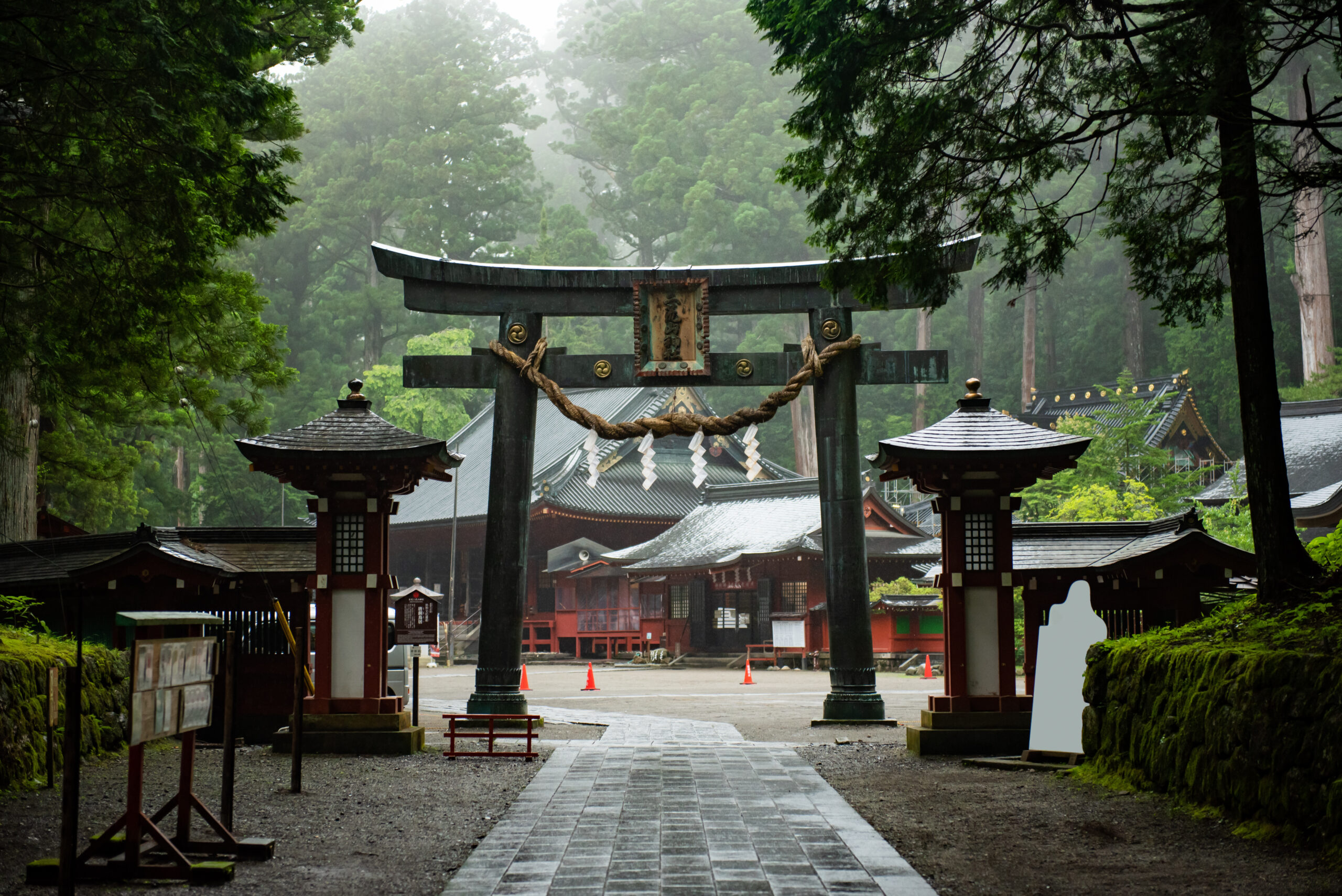
You might be thinking, “I’m really drawn to the peaceful atmosphere and rich history of Japanese shrines and temples. I want to experience the spiritual side of Japan and discover unique cultural activities, but where do I even start planning such a trip?”
Well, you’ve come to the right place. In this article, we’ll guide you through the captivating world of Japanese spiritual tourism, exploring the most significant shrines and temples, and uncovering unique cultural experiences that will leave you feeling inspired and connected to the heart of Japan.
Here, you’ll find insights into the best locations to visit and what makes them special, helping you plan an unforgettable journey through Japan’s sacred wonders.
Understanding Japanese Spiritual Tourism: Shrines and Temples
Japan is a land steeped in rich spiritual traditions, and for many, exploring its shrines (神社 – jinja) and temples (寺 – tera) is a fundamental aspect of understanding its culture. These sacred sites are not merely historical landmarks; they are active places of worship and hold deep significance for both the Japanese people and those visiting from abroad seeking a connection with Japan’s spiritual heart.
The Significance of Shinto Shrines (神社 – jinja)
What is Shinto?
Shinto (神道 – Shintō) is an indigenous religion of Japan, deeply rooted in the country’s history and mythology. Unlike many other religions, Shinto does not have a single founder or a set of scriptures. Instead, it revolves around the worship of kami (神 – kami), which are divine spirits or sacred powers that can reside in various aspects of nature, such as mountains, rivers, trees, and even rocks, as well as in ancestral spirits and revered figures. The core of Shinto is a reverence for these kami and a belief in the sacredness of the natural world. It emphasizes harmony between humans and nature, and purity is a central concept in Shinto practices. Shinto has played a crucial role in shaping Japanese values and traditions for centuries.
Key Features of Shrines
Shinto shrines are easily recognizable by their distinctive architecture and symbolic elements. One of the most iconic features is the torii (鳥居 – torii), a traditional Japanese gate that marks the entrance to a sacred area. The torii symbolically separates the mundane world from the sacred realm of the kami. Shrines often feature a main hall (本殿 – honden) where the enshrined kami is believed to reside. Visitors typically do not enter the honden but offer their prayers from the offering hall (拝殿 – haiden), which is often located in front of the honden. Another common feature is the purification fountain (手水舎 – temizuya), where visitors wash their hands and rinse their mouths as a symbolic act of purification before approaching the kami. You will also often find komainu (狛犬 – komainu), guardian dog statues, flanking the entrance or the haiden, believed to ward off evil spirits. The grounds of a shrine may also include other smaller shrines dedicated to different kami, as well as ema (絵馬 – ema), wooden plaques on which visitors write their wishes and prayers.
How to Pray at a Shrine
Praying at a Shinto shrine follows a specific etiquette. First, approach the temizuya (手水舎 – temizuya) and use the provided ladle to wash your left hand, then your right hand, and finally rinse your mouth (do not swallow the water). Next, proceed to the haiden (拝殿 – haiden). If there is a donation box (賽銭箱 – saisen-bako), toss in a small offering. Then, bow deeply twice, clap your hands twice to get the kami’s attention, and silently offer your prayers. Finally, bow deeply once more. It’s important to be respectful and quiet within the shrine grounds.
Exploring Buddhist Temples (寺 – tera)
While Shinto (神道 – Shintō) focuses on the reverence of kami (神 – kami) and the natural world, Buddhism (仏教 – Bukkyō), which arrived in Japan from mainland Asia in the 6th century, offers a different perspective on spirituality and life. Buddhism has deeply influenced Japanese culture and art, and its temples stand as serene and often majestic symbols of faith and enlightenment.
The Origins of Buddhism in Japan
Buddhism was introduced to Japan via Korea and China and initially faced some resistance from those who adhered to Shinto beliefs. However, it gradually gained acceptance, particularly among the ruling elite, and eventually spread throughout the country, coexisting and often syncretizing with Shinto. Over centuries, various Buddhist sects developed in Japan, each with its unique teachings and practices, contributing to the rich tapestry of Japanese spirituality.
Architectural Elements of Temples
Buddhist temples in Japan have distinct architectural features that set them apart from Shinto shrines. One of the most prominent is the main gate (山門 – sanmon), which often serves as an impressive entrance to the temple grounds. Temples typically feature a main hall (本堂 – hondō or kondō), which houses the principal image of Buddha or other important Buddhist figures. Many temples also have a pagoda (塔 – tō), a multi-storied tower that originally housed sacred relics. Other common structures include a lecture hall (講堂 – kōdō), a bell tower (鐘楼 – shōrō) containing a large bell that is often rung at specific times, and living quarters for the monks (僧坊 – sōbō). Temple grounds often include beautiful gardens designed to promote peace and contemplation.
Participating in Temple Activities
Visiting a Buddhist temple offers opportunities for various spiritual and cultural experiences. Upon entering the serene grounds, you might observe people offering prayers or placing incense and flowers at the main hall (本堂 – hondō or kondō). Some temples, particularly those associated with Zen Buddhism, offer zazen (坐禅), or seated meditation sessions, providing a chance to experience this core practice. You may also encounter monks engaged in rituals or chanting sutras (経 – kyō), the teachings of the Buddha. Many temples house and display significant religious art and artifacts, offering insights into Buddhist philosophy and history.
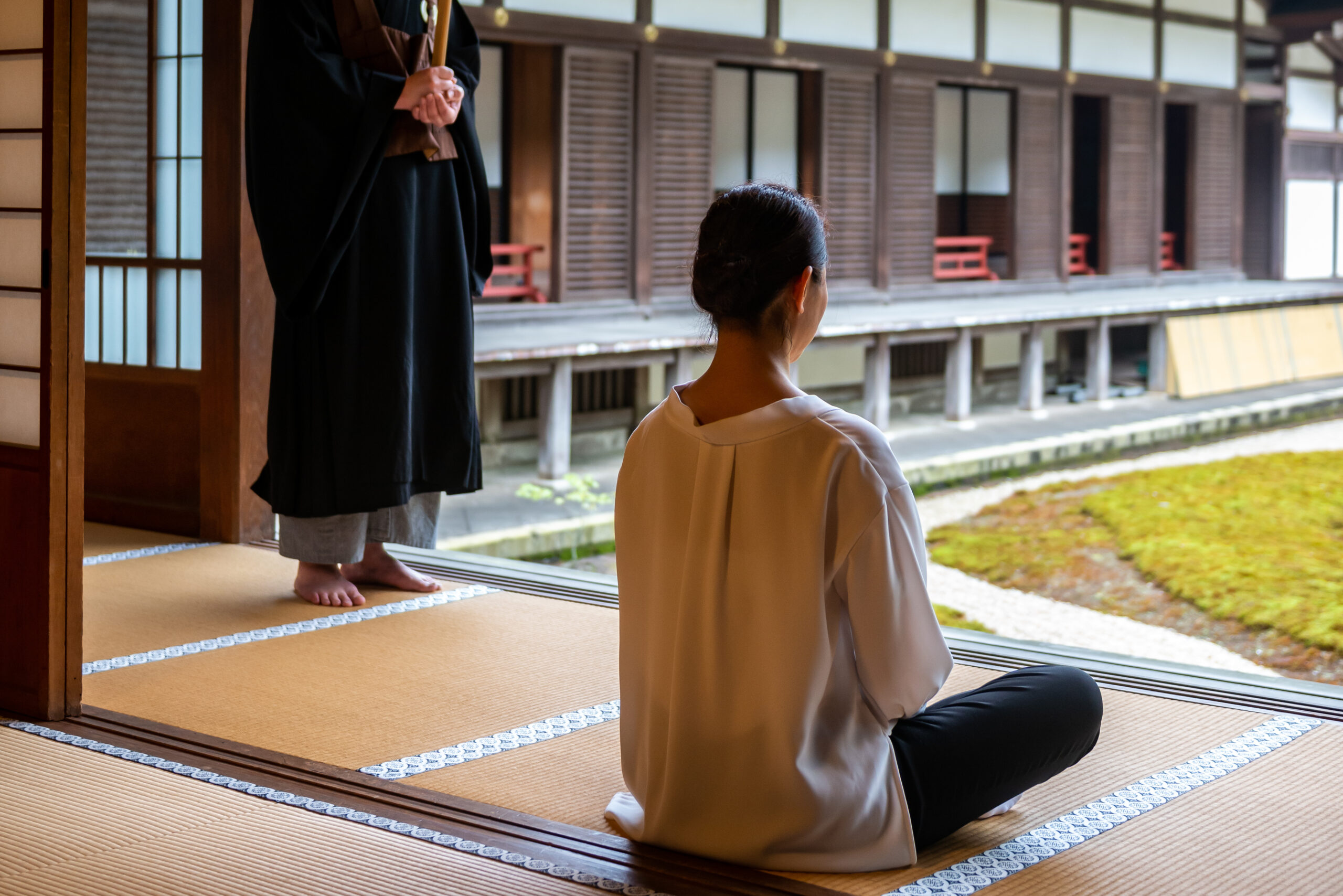
Additionally, both temples and shrines often have shops where you can purchase omamori (お守り), amulets believed to provide protection and good fortune, and collect goshuin (御朱印), beautifully designed stamps and calligraphy that serve as a cherished record of your visit to a sacred site. Collecting goshuin has become a popular activity for both Japanese and international visitors as a way to commemorate their spiritual journey.
The Difference Between Shrines and Temples: Key Distinctions
While both shrines (神社 – jinja) and temples (寺 – tera) are important religious sites in Japan, they originate from different traditions and have distinct characteristics. Understanding these differences can enhance your appreciation for both types of sacred spaces.
Shinto shrines are uniquely Japanese and predate the arrival of Buddhism. They are dedicated to the worship of kami (神 – kami), the indigenous deities and spirits of Japan. The architectural hallmark of a shrine is the torii (鳥居 – torii) gate, which signifies the entrance to a sacred area. Shrines are typically identified by this prominent gate, as well as other features like the purification trough (手水舎 – temizuya) and often simpler architectural styles compared to temples. The priests who serve at Shinto shrines are called kannushi (神主).
Buddhist temples, on the other hand, came to Japan from mainland Asia. They are associated with the teachings of Buddha and are places of Buddhist worship and practice. Temples often feature a main gate (山門 – sanmon), a main hall (本堂 – hondō or kondō) housing Buddhist statues, and sometimes a pagoda (塔 – tō). You are also more likely to find statues of Buddha and Bodhisattvas within temple grounds. The religious figures at Buddhist temples are monks (僧侶 – sōryo) or nuns (尼僧 – nisō).
In essence, think of Shinto as the native spiritual tradition focused on the kami and the sanctity of nature, while Buddhism is a later arrival centered on the teachings of enlightenment. While they are distinct, it’s important to note that over the centuries, Shinto and Buddhism in Japan have often influenced each other, leading to a unique religious landscape where elements of both can sometimes be found within the same sacred complex. However, generally, the presence of a torii gate strongly indicates a Shinto shrine, and the presence of prominent Buddhist statues and pagodas signifies a Buddhist temple.
Discovering Japan’s Power Spots: Connecting with Nature’s Energy
Beyond the traditional religious structures of shrines and temples, Japan is also renowned for its power spots (パワースポット). These are locations believed to possess special spiritual energy or healing powers, often associated with natural landscapes or historical events. Visiting power spots has become increasingly popular among people seeking spiritual rejuvenation, good luck, or simply a connection with the natural world.
What Exactly are Power Spots?
The Concept of Energy Flow (Ki)
The idea behind power spots is often linked to the concept of energy flow (気 – ki), which translates to “energy” or “life force.” This concept is prevalent in various Eastern philosophies and is believed to flow through everything in the universe. Power spots are thought to be places where this ki is particularly strong or concentrated, offering potential benefits to those who visit.
Natural vs. Man-Made Power Spots
Power spots in Japan can be broadly categorized into natural and man-made locations. Natural power spots often include mountains, waterfalls, forests, caves, and coastlines that are considered sacred due to their natural beauty, unique geological features, or association with myths and legends. Man-made power spots can include certain shrines and temples that are believed to have accumulated spiritual energy over time due to the prayers and devotion of countless visitors, or places where significant historical events occurred.
Popular Types of Power Spots in Japan
Sacred Mountains
Mountains have long been considered sacred in Japan, serving as dwelling places for kami and sources of spiritual power. Mount Fuji (富士山 – Fuji-san), with its majestic and symmetrical form, is perhaps the most iconic example, revered as a sacred mountain and a potent power spot. Other mountains like Mount Kōya (高野山 – Kōya-san), a major center of Shingon Buddhism, are also considered highly spiritual.
Mystical Waterfalls
Waterfalls are often seen as places where the energy of the earth is released, making them powerful spiritual locations. Nachi Falls (那智の滝 – Nachi no Taki) in Wakayama Prefecture, the tallest waterfall in Japan, is a prime example, associated with the Kumano Nachi Taisha shrine and believed to be inhabited by a kami.
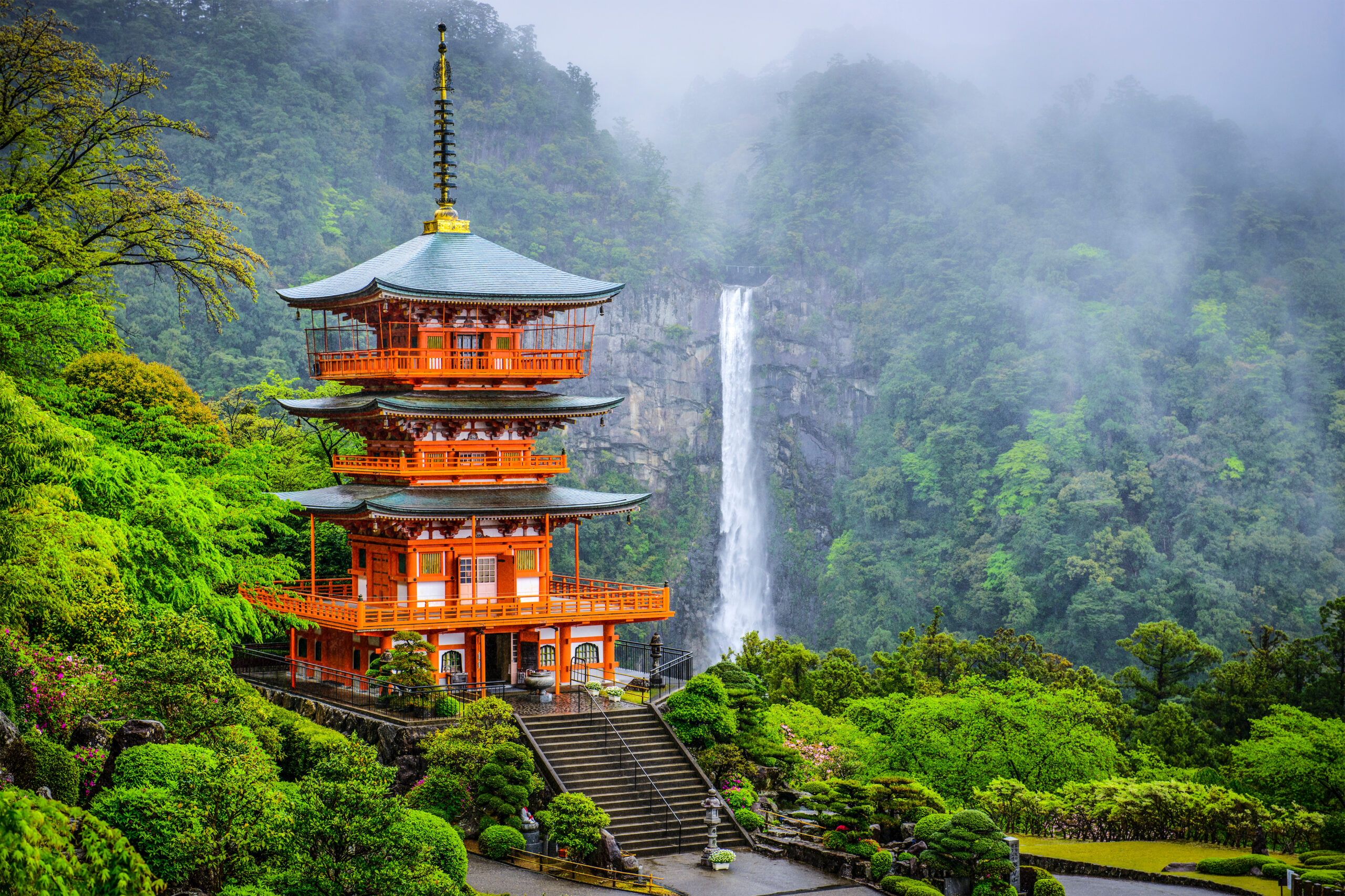
Ancient Forests and Groves
Old-growth forests and groves, with their towering trees and serene atmosphere, are often considered power spots due to the strong presence of nature and the feeling of tranquility they evoke. Yakushima (屋久島), a UNESCO World Heritage site covered in ancient cedar trees, is a well-known example of a forest power spot.
How to Experience the Energy of a Power Spot
There is no single prescribed way to experience the energy of a power spot. Many people simply find being in these locations to be naturally calming and uplifting. Some practice mindful walking, paying close attention to their surroundings and the sensations in their body. Others may choose to meditate or simply sit quietly and absorb the atmosphere. The key is to be present and open to the experience. It’s also important to approach these sites with respect for their natural and often spiritual significance.
Immersing Yourself in Unique Japanese Cultural Experiences
While visiting shrines, temples, and power spots offers a profound connection to Japan’s spiritual side, enriching your journey further involves engaging with unique aspects of Japanese culture. These experiences provide a deeper understanding of the country’s traditions, aesthetics, and values.
Traditional Arts and Crafts
Tea Ceremony (茶道 – Sadō)
The tea ceremony (茶道 – Sadō), or the Way of Tea, is a ritualized form of preparing and serving green tea, deeply influenced by Zen Buddhism. More than just drinking tea, it’s a practice that emphasizes harmony, respect, purity, and tranquility. Participating in a tea ceremony offers a glimpse into the meticulousness and grace of Japanese tradition. Every movement, from the way the tea is whisked to the manner in which the bowl is offered and received, is imbued with meaning. Experiencing a tea ceremony can be a truly unique and calming cultural immersion.
Calligraphy (書道 – Shodō)
Calligraphy (書道 – Shodō), the art of beautiful writing, is highly respected in Japan. It’s not just about forming letters correctly; it’s a meditative practice that focuses on the flow of energy and the spirit of the characters. Trying a calligraphy workshop can be a fascinating way to engage with Japanese aesthetics and discipline. You’ll learn about the different brush strokes and the importance of balance and form in creating meaningful characters.
Flower Arrangement (華道 – Kadō)
Flower arrangement (華道 – Kadō), also known as Ikebana, is the Japanese art of arranging flowers in a way that brings out their natural beauty and expresses harmony. Unlike Western floral arrangements that often focus on fullness and color, Ikebana emphasizes shape, line, and form, creating asymmetrical and minimalist designs. Participating in an Ikebana class can offer a unique perspective on Japanese appreciation for nature and balance.
We also recommend checking out our article: Unlock Authentic Japan: Hands-On Traditional Craft Workshops!
Spiritual Practices Beyond Shrines and Temples
Meditation (坐禅 – Zazen)
Meditation (坐禅 – Zazen) is a core practice in Zen Buddhism, focusing on seated meditation to achieve a state of mindfulness and inner peace. Some temples offer introductory zazen sessions for visitors, providing an opportunity to experience this ancient practice firsthand. It involves specific postures, breathing techniques, and mental focus, aiming to quiet the mind and gain deeper self-awareness.
Pilgrimages (遍路 – Henro)
Embarking on a pilgrimage (遍路 – Henro), such as the famous Shikoku Pilgrimage encompassing 88 temples, is a profound spiritual journey. While it requires a significant time commitment and physical endurance, it offers an unparalleled opportunity for introspection and connection with the spiritual landscape of Japan. Even a shorter section of a pilgrimage can provide a unique perspective on dedication and faith.
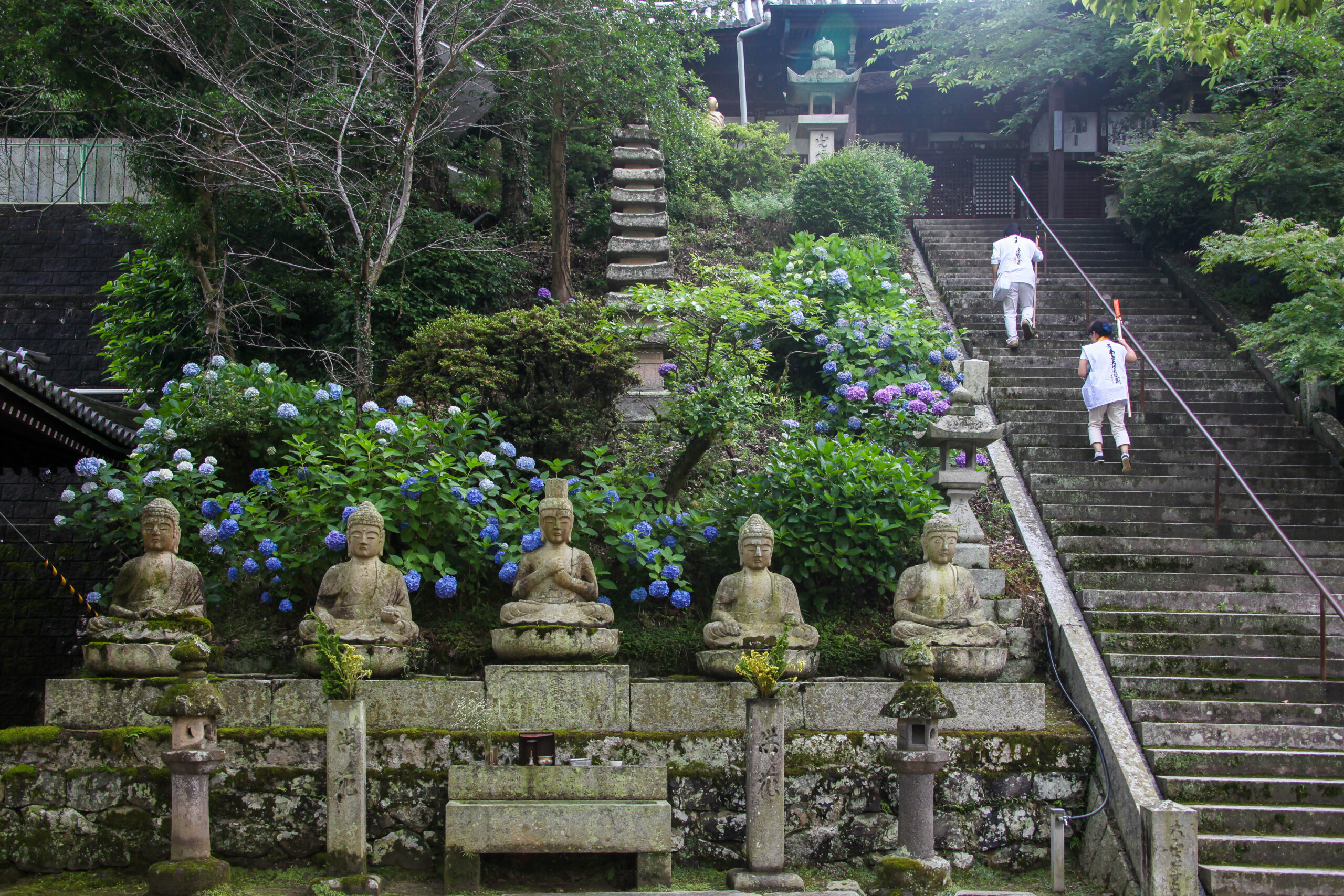
Experiencing Local Festivals and Traditions
Participating in local festivals (祭り – matsuri) can be an incredibly vibrant way to experience Japanese culture. Many festivals have deep roots in Shinto and Buddhist traditions, featuring processions, traditional music, costumes, and rituals that have been passed down through generations. Observing or even participating in a local matsuri offers a unique glimpse into the community spirit and cultural heritage of Japan.
We also recommend checking out these articles!
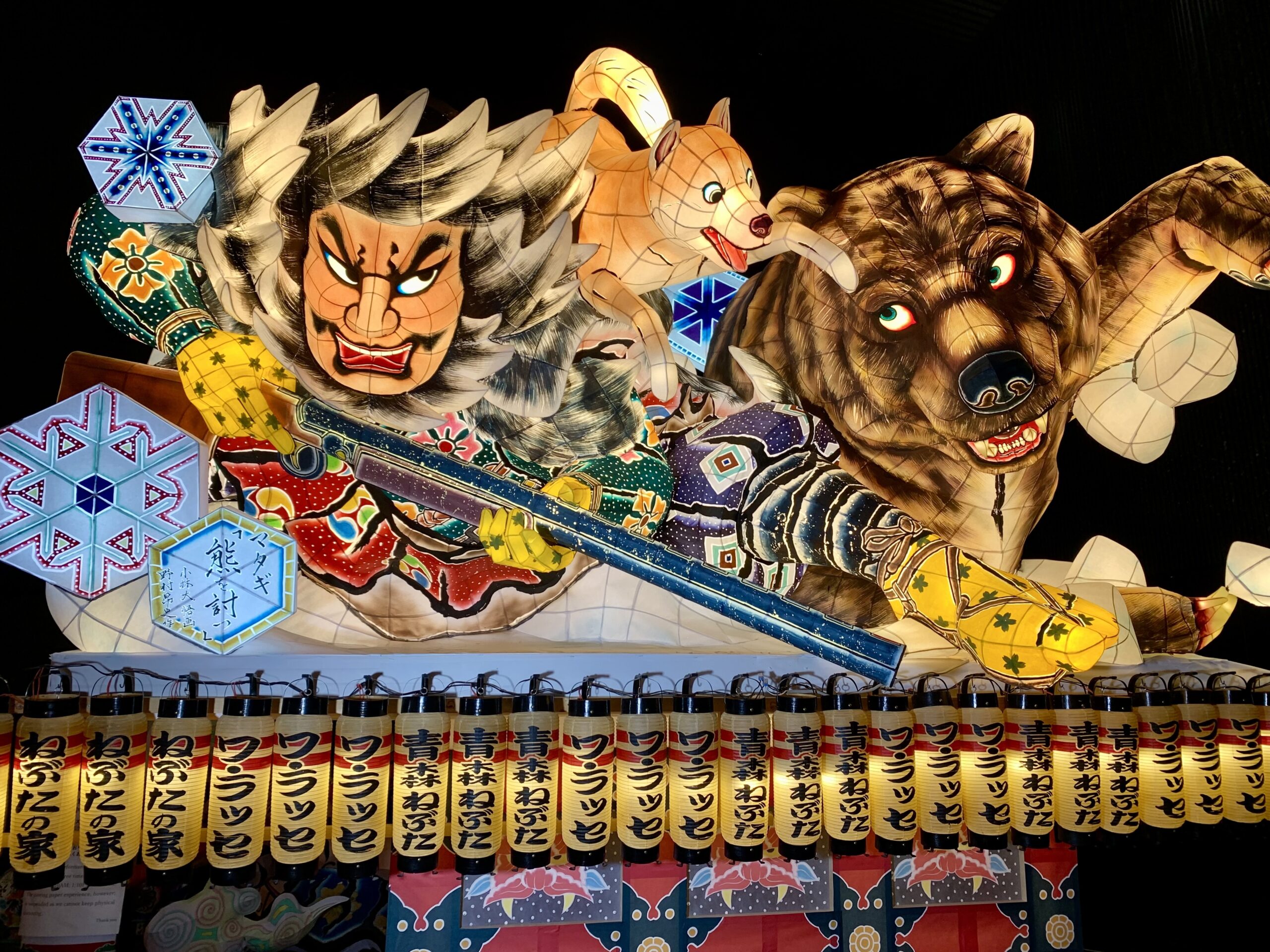
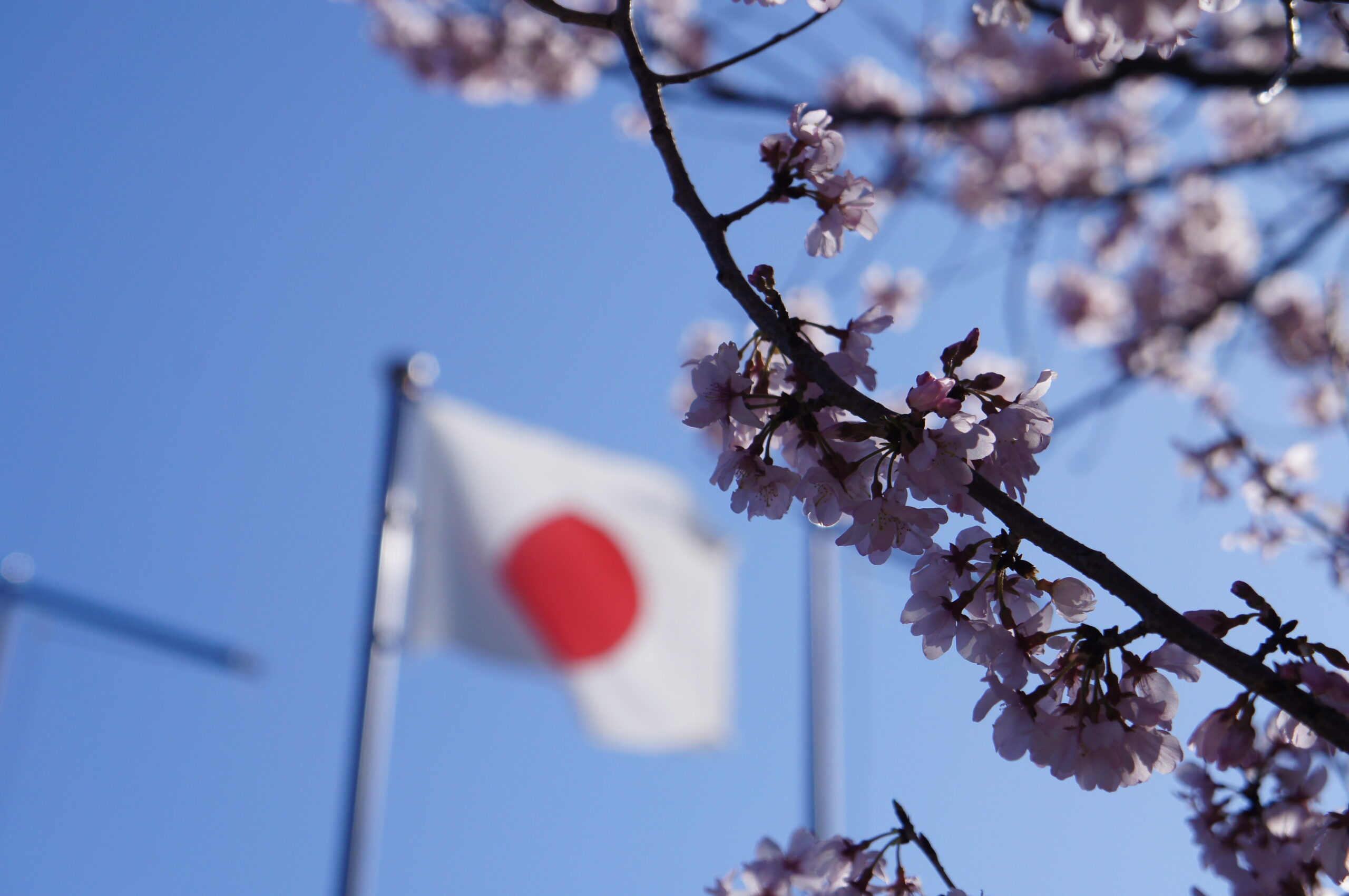
Planning Your Spiritual Journey: Practical Tips for Travelers
Embarking on a spiritual journey through Japan requires some planning to ensure a smooth and enriching experience. Here are some practical tips to help you prepare for your exploration of shrines, temples, and other sacred sites.
Best Times to Visit for Spiritual Exploration
While Japan is beautiful year-round, certain times might be more conducive to spiritual exploration. Spring (March to May) offers pleasant weather and the stunning beauty of cherry blossoms, which can enhance the serene atmosphere of many temples and shrines. Autumn (September to November) brings vibrant fall foliage, creating picturesque landscapes around spiritual sites. Visiting during the shoulder seasons (late spring or early autumn) can also mean fewer crowds. Be mindful of major Japanese holidays, such as Golden Week (late April to early May) and the Obon (お盆) period in mid-August, as these times can be very busy.
Related articles you may find interesting:
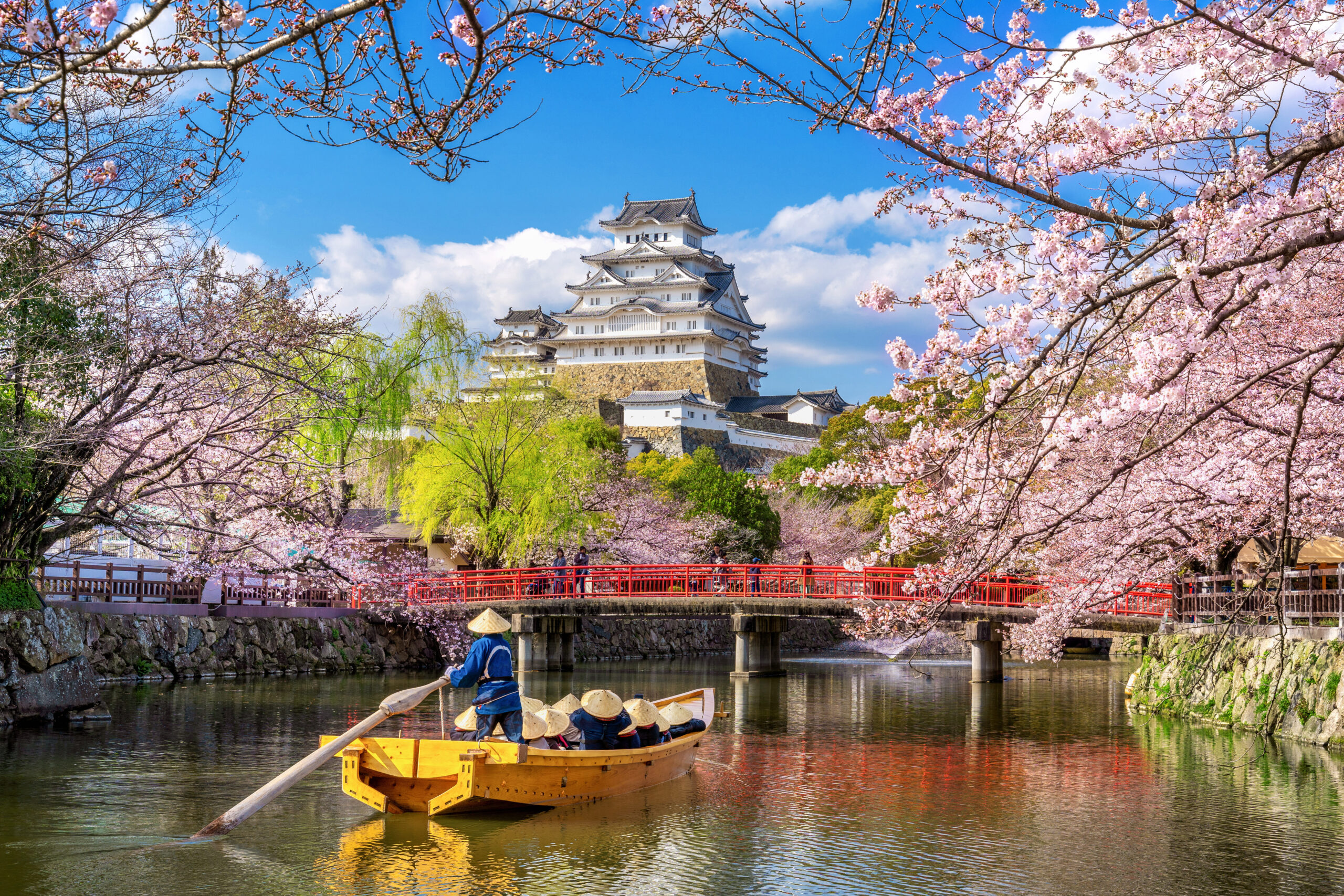

Transportation Options for Reaching Sacred Sites
Japan has an excellent public transportation system, making it relatively easy to reach most spiritual sites. The Shinkansen (新幹線) bullet train is ideal for long-distance travel between major cities. Local trains and buses are useful for accessing shrines and temples in more rural areas. Consider purchasing a Japan Rail Pass if you plan on extensive train travel. Within cities, subways and local buses are readily available. For more remote power spots, renting a car might be necessary.
Accommodation Choices Near Shrines and Temples
Depending on your preferences, you can find various types of accommodation near spiritual sites. Traditional ryokan (旅館) often offer a more immersive experience with tatami rooms, futon bedding, and traditional Japanese meals. Some temples also offer shukubo (宿坊), or temple lodgings, providing a unique opportunity to stay within the temple grounds and sometimes participate in morning prayers or other activities. Standard hotels and guesthouses are also widely available in most areas.
Essential Etiquette for Religious Sites
Respectful behavior is paramount when visiting shrines and temples.
Dress Code
While there is no strict dress code, it’s advisable to dress modestly. Avoid overly revealing clothing. You will often be required to remove your shoes when entering temple buildings and sometimes in certain areas of shrines.
Behavior Inside Sacred Areas
Maintain a quiet and respectful demeanor within the grounds and especially inside the halls of worship. Avoid loud conversations or disruptive behavior. Photography may be restricted in certain areas, so be sure to check for signs.
Offering Customs
At shrines, it is customary to toss a small coin into the saisen-bako (賽銭箱) before praying. At temples, you might see people lighting incense sticks and placing them in designated holders or making offerings of flowers. Follow the lead of locals if you are unsure.
Kyoto’s Best Temples: A Deep Dive
Kyoto, the former imperial capital of Japan, is renowned for its rich cultural heritage and is home to numerous breathtaking temples. Exploring these temples offers a profound glimpse into Japan’s history, art, and spiritual traditions. Here are a few of the most iconic and significant temples in Kyoto:
Kiyomizu-dera Temple: Iconic Views and Ancient History
Kiyomizu-dera Temple (清水寺) is one of Kyoto’s most famous temples, known for its magnificent wooden stage that juts out from the main hall, offering panoramic views of the city, especially stunning during cherry blossom and autumn foliage seasons. The temple’s history dates back to the late Nara period, and its current structures were largely rebuilt in the 17th century.
The name “Kiyomizu” literally means “pure water,” derived from the Otowa Waterfall located within the temple complex, whose waters are believed to have therapeutic properties. Visitors can drink from the three separate streams of the waterfall, each said to bestow different benefits: longevity, success in studies, and a fortunate love life. However, it’s traditionally advised to choose only one to avoid being greedy. The main hall enshrines the eleven-faced, thousand-armed Kannon Bodhisattva.
Fushimi Inari-taisha Shrine: Thousands of Vermilion Gates
While technically a Shinto shrine, Fushimi Inari-taisha Shrine (伏見稲荷大社) is included here due to its immense popularity and spiritual significance often experienced by visitors. It is famous for its thousands of vibrant vermilion torii (鳥居 – torii) gates, which wind their way up a mountainside. These gates were donated by individuals and companies as a sign of gratitude to Inari, the Shinto deity of rice, sake, and prosperity.
The hike to the summit takes approximately two to three hours and offers breathtaking views along the way. The shrine complex also features numerous smaller shrines, shops selling Inari-related souvenirs (such as fox statues, as foxes are considered Inari’s messengers), and atmospheric bamboo groves.
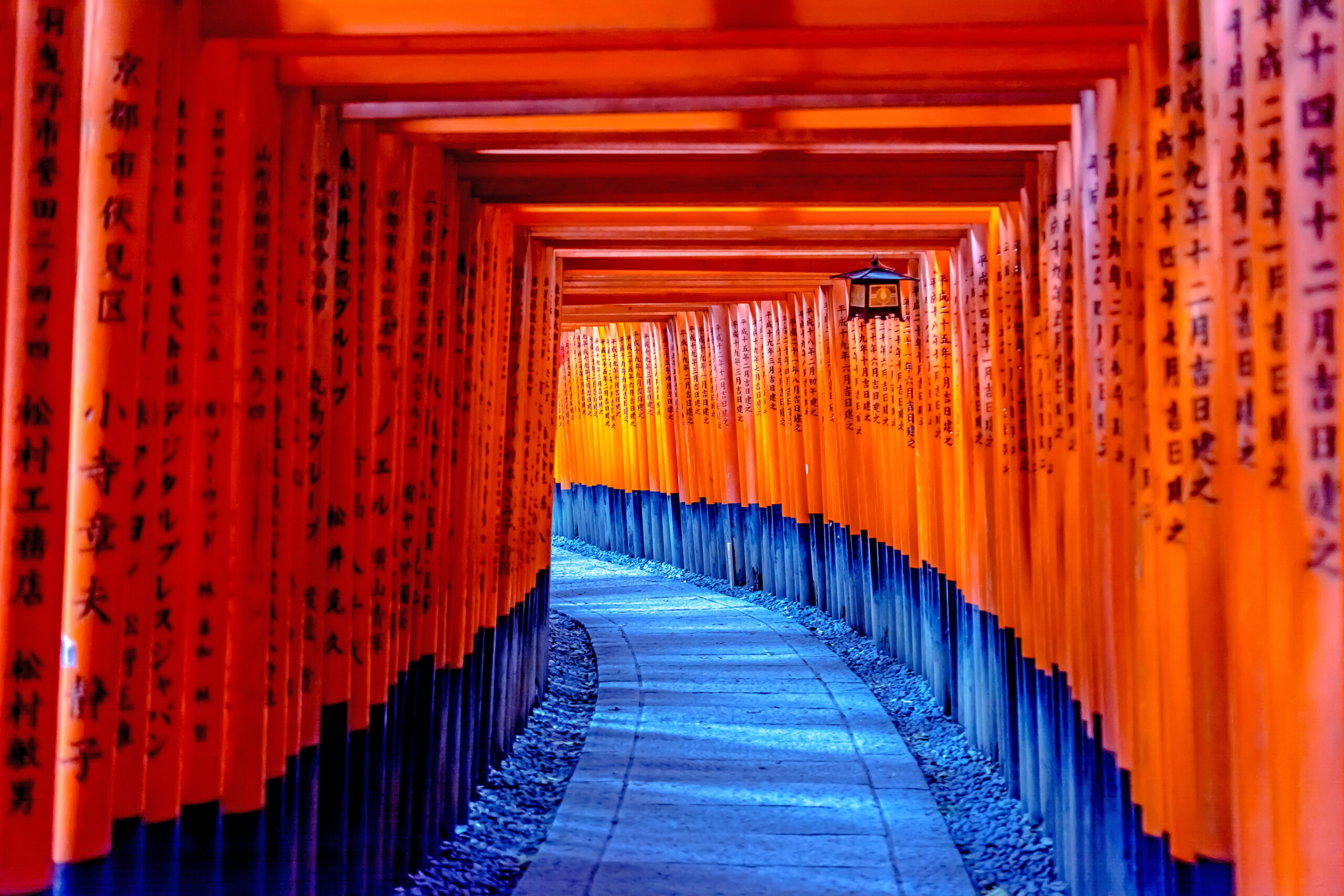
Kinkaku-ji (Golden Pavilion): A Stunning Zen Buddhist Temple
Kinkaku-ji (金閣寺), also known as the Golden Pavilion, is a Zen Buddhist temple whose top two floors are completely covered in gold leaf. Originally built as a retirement villa for the shogun Ashikaga Yoshimitsu in the late 14th century, it was later converted into a temple after his death. Reflecting beautifully on the surrounding pond, Kinkaku-ji is an iconic image of Kyoto and a testament to the luxurious architecture of the Muromachi period.
While visitors cannot enter the pavilion, they can stroll through the meticulously landscaped gardens and admire its beauty from various angles. The site also includes other points of interest, such as the Sekkatei Teahouse and the Fudo Hall.
Ryoan-ji Temple: The Mysterious Rock Garden
Ryoan-ji Temple (龍安寺) is famous for its Zen rock garden, considered one of the finest examples of kare-sansui (枯山水), or dry landscape gardening. The garden consists of fifteen rocks arranged in groups on a bed of meticulously raked white gravel, enclosed by low earthen walls. The intriguing aspect of the garden is that from any viewpoint other than directly above, only fourteen of the fifteen rocks can be seen.
The symbolism and meaning of the garden have been debated for centuries, inviting contemplation and personal interpretation. Ryoan-ji also features a beautiful moss garden and a teahouse known for its original washbasin with a famous inscription.
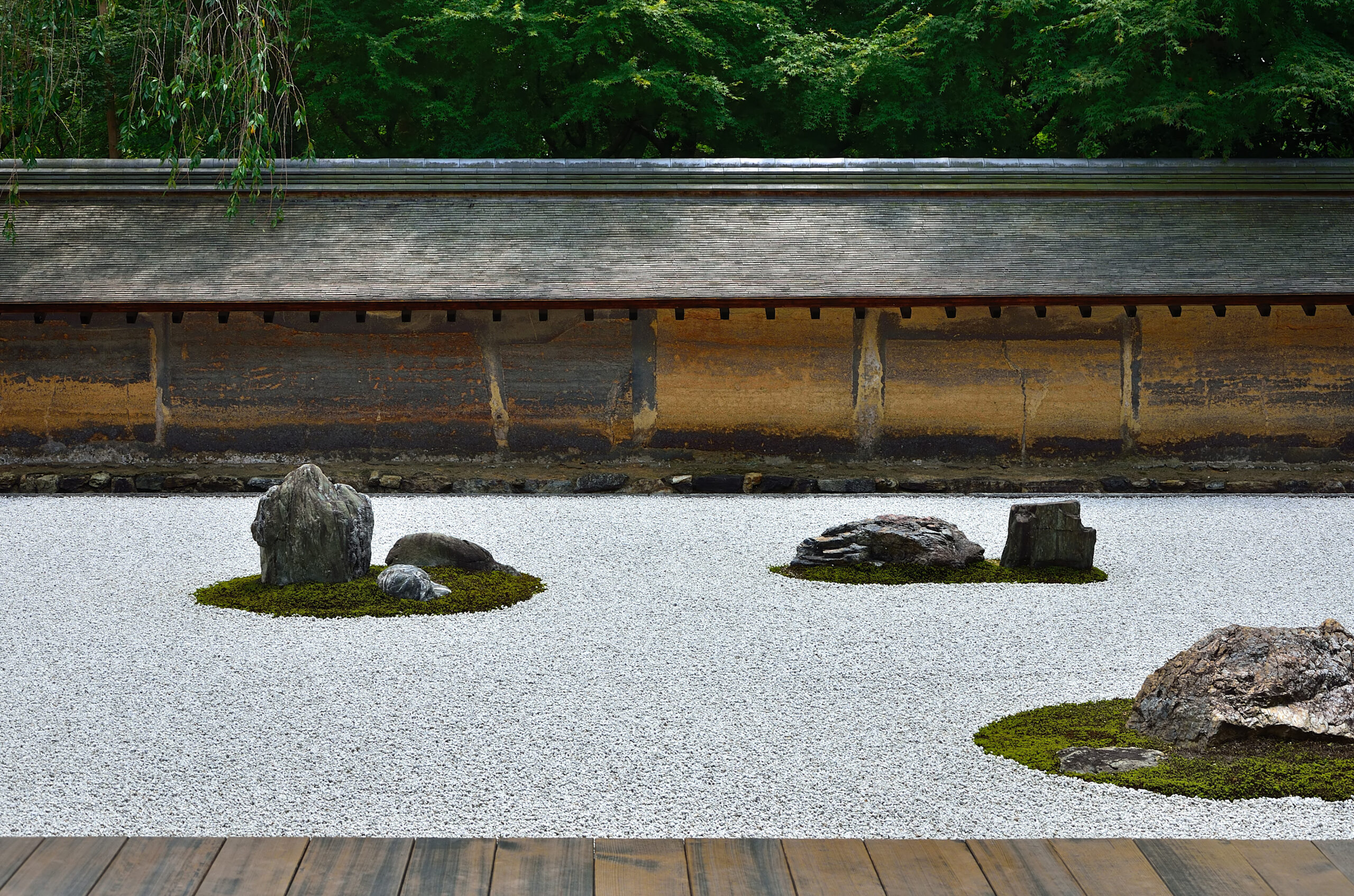
Famous Shrines Across Japan: Must-Visit Sacred Sites
While Kyoto boasts numerous significant temples, Japan is also home to many renowned and spiritually important shrines located throughout the country. These shrines often hold deep historical and cultural significance, dedicated to various kami and attracting countless visitors annually. Here are a few must-visit famous shrines across Japan:
Meiji Jingu Shrine (Tokyo): A Peaceful Oasis Dedicated to Emperor Meiji
Located in the bustling heart of Tokyo, Meiji Jingu Shrine (明治神宮) is a peaceful oasis dedicated to Emperor Meiji and Empress Shoken. Emperor Meiji is credited with leading Japan’s modernization during the late 19th and early 20th centuries. The shrine was completed in 1920, after their deaths, and is surrounded by a tranquil forest comprising over 100,000 trees donated from all over Japan.
The approach to the main shrine complex involves walking through massive torii (鳥居 – torii) gates, creating a sense of entering a sacred and serene space. The main buildings were rebuilt after being damaged during World War II but retain their original architectural style. Meiji Jingu is a popular place for New Year’s prayers (hatsumode – 初詣) and hosts various traditional ceremonies throughout the year.
Want to know more about New Year Traditions in Japan? Read the articles below!
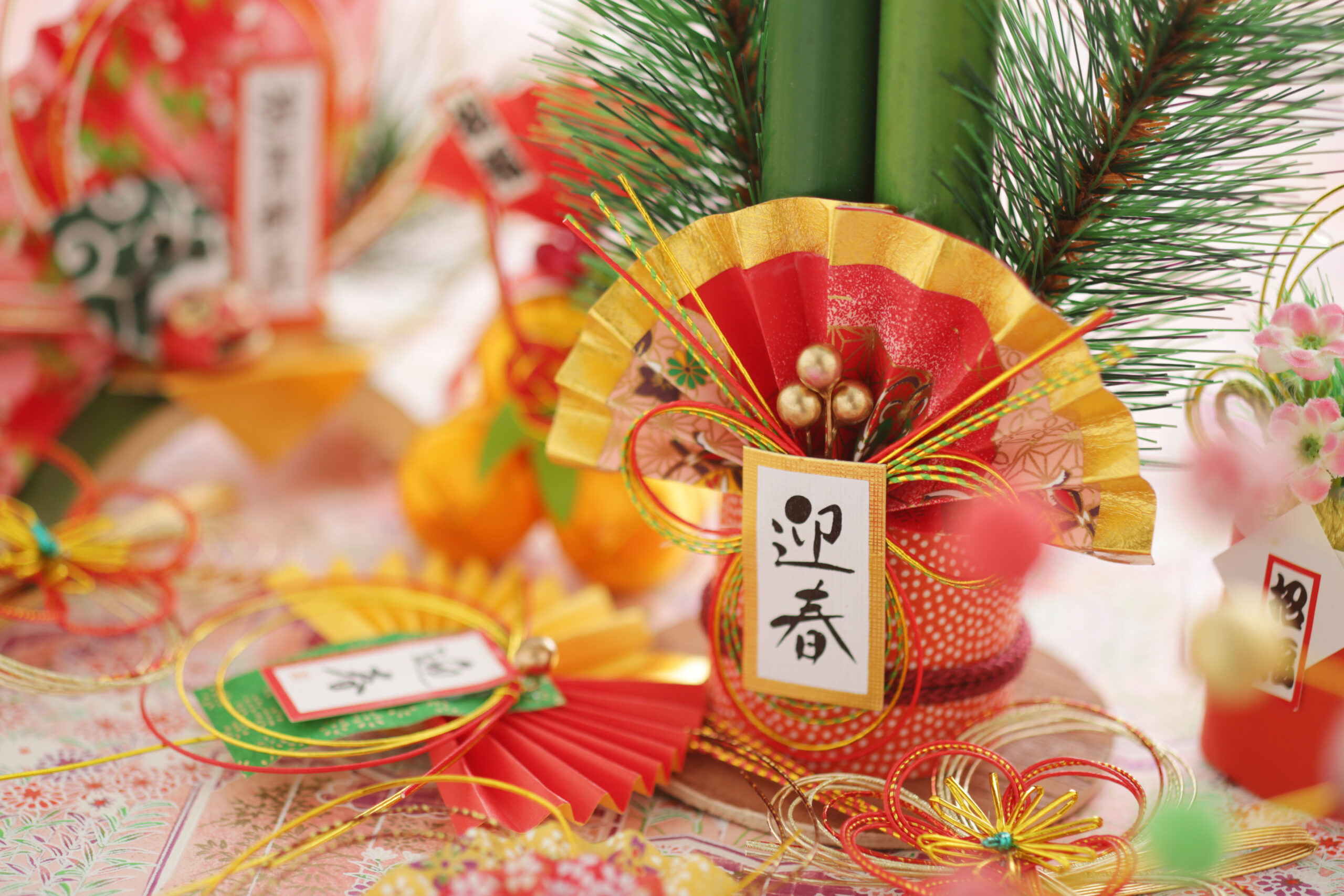
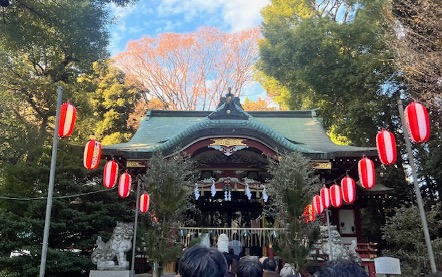
Itsukushima Shrine (Hiroshima): The Floating Torii Gate
Itsukushima Shrine (厳島神社), located on Miyajima Island in Hiroshima Prefecture, is famous for its iconic “floating” torii (鳥居 – torii) gate standing in the sea. This Shinto shrine is dedicated to the three daughters of the storm god Susanoo-no-Mikoto. The shrine complex itself is built over the water on stilts, creating a breathtaking scene, especially at high tide when it appears to float.
The history of the shrine dates back to the 6th century, and it has been recognized as a UNESCO World Heritage site. Visitors can walk around the shrine buildings, view the Great Torii Gate up close (by ferry), and explore the island’s other attractions, such as wild deer roaming freely.
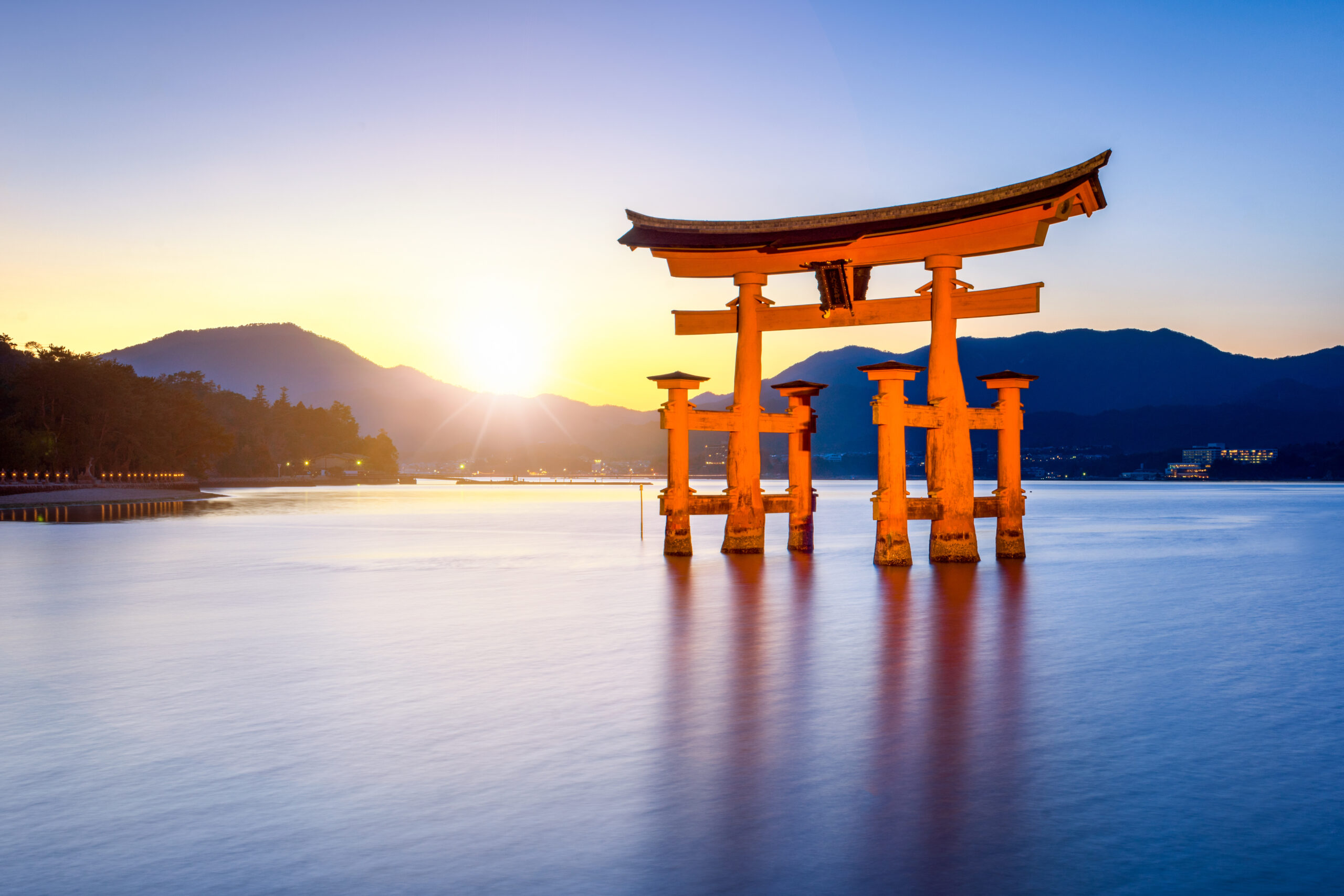
Ise Grand Shrine (Mie): Japan’s Most Sacred Shinto Shrine
Ise Grand Shrine (伊勢神宮 – Ise Jingū) in Mie Prefecture is considered the most sacred Shinto shrine in Japan. It is dedicated to the sun goddess Amaterasu-Omikami, who is considered the ancestor of the Imperial Family. The shrine complex is vast, comprising two main shrines, the Inner Shrine (Naikū – 内宮) dedicated to Amaterasu and the Outer Shrine (Gekū – 外宮) dedicated to Toyouke-no-Omikami, the deity of agriculture and industry, as well as numerous smaller auxiliary shrines.
The main structures are rebuilt every 20 years in a tradition called shikinen sengū (式年遷宮), preserving the ancient architectural style. The serene and dignified atmosphere of Ise Grand Shrine makes it a truly significant spiritual site.
Toshogu Shrine (Nikko): An Ornate UNESCO World Heritage Site
Toshogu Shrine (東照宮) in Nikko, Tochigi Prefecture, is a lavishly decorated Shinto shrine dedicated to Tokugawa Ieyasu, the founder of the Tokugawa shogunate. Unlike the more modest style of many other shrines, Toshogu is renowned for its intricate carvings, vibrant colors, and gold leaf decorations.
It is a UNESCO World Heritage site and a masterpiece of Japanese shrine architecture from the Edo period. Highlights include the Yomeimon Gate, also known as the “Gate of Sunlight,” and the Sleeping Cat carving. The shrine complex is located amidst a beautiful forest and includes numerous halls, gates, and a five-story pagoda.
Beyond the Famous: Uncovering Hidden Spiritual Gems
While the well-known shrines and temples offer incredible experiences, Japan is also dotted with countless lesser-known spiritual sites that can provide a more intimate and perhaps even more profound connection to the country’s spiritual landscape. Exploring these hidden gems can lead to unexpected discoveries and a deeper appreciation for local traditions and beliefs.
Local Shrines with Unique Histories and Festivals
Venturing beyond the major tourist destinations can lead you to local shrines (神社 – jinja) with unique histories and charming festivals (祭り – matsuri). These community-focused shrines often have strong ties to the area’s past and may enshrine local deities or be associated with specific legends. Attending a local matsuri can be a fantastic way to witness vibrant traditions and interact with the community in a meaningful way. You might find smaller, beautifully maintained shrines tucked away in residential areas or nestled in the mountains, offering a sense of peace and tranquility away from the crowds.
Secluded Temples in Rural Areas
Similarly, rural Japan is home to many secluded temples (寺 – tera) that offer a serene and contemplative atmosphere. Often surrounded by nature, these temples may have a long history and house significant cultural artifacts without the large crowds found at more famous sites. Visiting such temples can provide a genuine sense of escape and an opportunity for quiet reflection. Some might even offer unique experiences like shakyo (写経), the practice of hand-copying Buddhist scriptures.
Lesser-Known Power Spots for Tranquility
Beyond the widely publicized power spots (パワースポット), there are numerous other locations believed to hold special energy that are less visited by tourists. These might include hidden waterfalls, ancient groves of trees, or uniquely shaped rocks with local spiritual significance. Discovering these lesser-known spots can feel like a personal adventure and offer a more direct connection with the natural and spiritual energy of the land.
Tips for Finding Off-the-Beaten-Path Locations
Finding these hidden gems often involves doing a bit of research beyond the standard tourist guides. Local tourism boards’ websites, regional travel blogs, and even asking locals for recommendations can be great ways to uncover these treasures. Be open to exploring smaller towns and rural areas, and don’t be afraid to take detours. Sometimes, the most rewarding spiritual experiences are found in the places you least expect.
Related article you may find interesting:

Recommended Official Websites for Discovering Hidden Gems:
- Japan National Tourism Organization (JNTO): The official tourism website for Japan offers a vast amount of information on various regions and attractions, including cultural and historical sites that may be less widely known. Use their search function to explore specific areas or themes.
- Prefectural Tourism Websites: Many of Japan’s prefectures have their own official tourism websites in English. These are excellent resources for finding local information on shrines, temples, festivals, and natural attractions within a specific region that might not be featured in general travel guides. You can often find these by searching for “[Prefecture Name] Tourism English” (e.g., “Gifu Tourism English”).
- Agency for Cultural Affairs (文化庁 – Bunkachō): While not a tourism website, the Agency for Cultural Affairs provides information about Japan’s designated cultural properties, including many historically and spiritually significant sites that might be considered hidden gems. Exploring this site can offer deeper insights into the cultural importance of these locations.
- Local City/Town Tourism Associations: Many individual cities and towns in Japan have their own tourism association websites, often with very detailed information about local attractions, including smaller shrines, temples, and unique cultural experiences. Try searching for “[City/Town Name] Tourism English” to find these resources (e.g., “Kinosaki Onsen Tourism English”).
Conclusion: Embracing the Spiritual Heart of Japan
Japan’s shrines (神社 – jinja), temples (寺 – tera), and power spots (パワースポット) offer a unique window into the country’s rich spiritual heritage and cultural identity. Whether you are drawn to the serene beauty of ancient temples, the vibrant traditions of Shinto shrines, or the mystical energy of natural landscapes, exploring these sacred sites provides an opportunity for introspection, cultural immersion, and a deeper connection with the essence of Japan. By understanding the significance and etiquette associated with these places, visitors can gain a richer and more meaningful travel experience, leaving with lasting memories of Japan’s spiritual heart.
FAQ about Spiritual Journey in Japan
What is the best way to travel between spiritual sites in Japan?
Japan boasts an efficient and extensive public transportation network. The Shinkansen (新幹線) bullet train is excellent for covering long distances between major cities where many significant shrines and temples are located. For more local travel to reach specific sites, consider using local trains and buses. In some rural areas, renting a car might offer the most flexibility, especially for accessing certain power spots. For travel within cities like Kyoto and Tokyo, subways and local bus systems are readily available. A Japan Rail Pass can be a cost-effective option if you plan to travel extensively by train.
Are there any specific customs I should be aware of when visiting shrines and temples?
Yes, it’s important to be mindful of local customs. At both shrines and temples, it’s generally expected to be quiet and respectful. Before entering, cleanse your hands and rinse your mouth at the temizuya (手水舎) at shrines. Remove your shoes when entering temple buildings. When praying at a shrine, bow twice, clap twice, and bow once more after offering a small coin. At temples, you can offer incense or flowers. Photography might be restricted in certain areas, so always check for signs.
Can I participate in any spiritual activities as a tourist?
Many temples offer opportunities for visitors to participate in spiritual activities such as zazen (坐禅) meditation sessions or shakyo (写経) (hand-copying sutras). Some shrines might also have guided tours or allow visitors to participate in certain festivals or rituals. It’s best to check the individual websites or inquire at the site for available options. Participating in a tea ceremony (茶道 – Sadō) is another excellent way to experience Japanese culture with a spiritual undertone.
What are some recommended power spots near major cities like Tokyo or Osaka?
Near Tokyo, Mount Takao (高尾山 – Takaosan) is a popular and easily accessible power spot offering beautiful nature and temples. Meiji Jingu Shrine (明治神宮) in the heart of Tokyo is also considered a powerful and peaceful place. Near Osaka, Mount Kōya (高野山 – Kōya-san), while requiring a bit more travel, is a major center of Shingon Buddhism and a significant power spot. Mount Yoshino (吉野山 – Yoshinoyama) in Nara Prefecture, known for its cherry blossoms, is also considered a sacred mountain.
Is it necessary to speak Japanese to enjoy spiritual tourism?
While knowing some basic Japanese phrases can certainly enhance your experience, it is not strictly necessary. Many major tourist destinations, including popular shrines and temples, have signs and information in English. Transportation hubs also typically have English signage and staff who can assist you. However, for venturing to more off-the-beaten-path locations, having a translation app or a basic understanding of Japanese might be helpful. Respect and a willingness to learn a few key phrases will generally be well-received.
